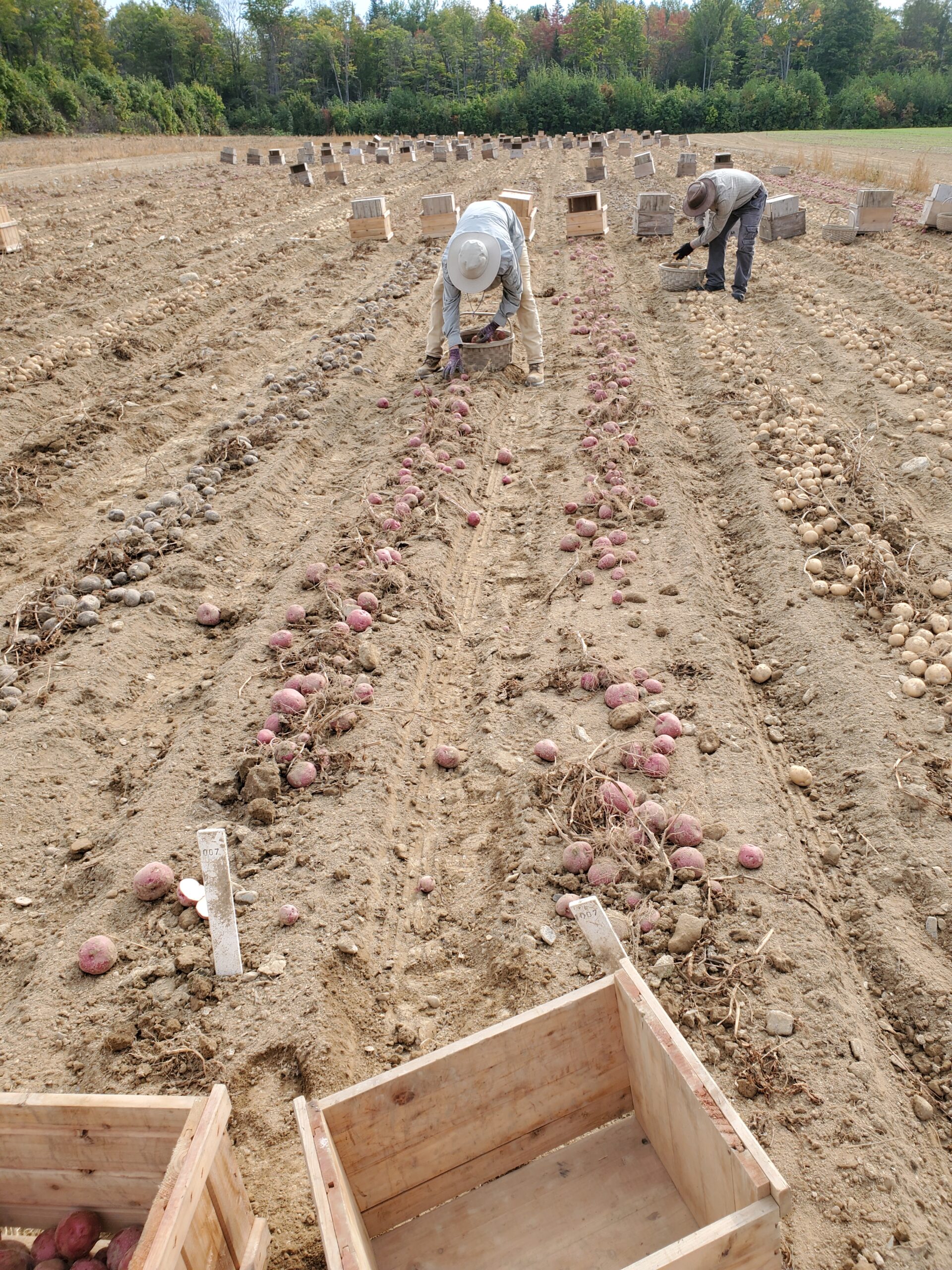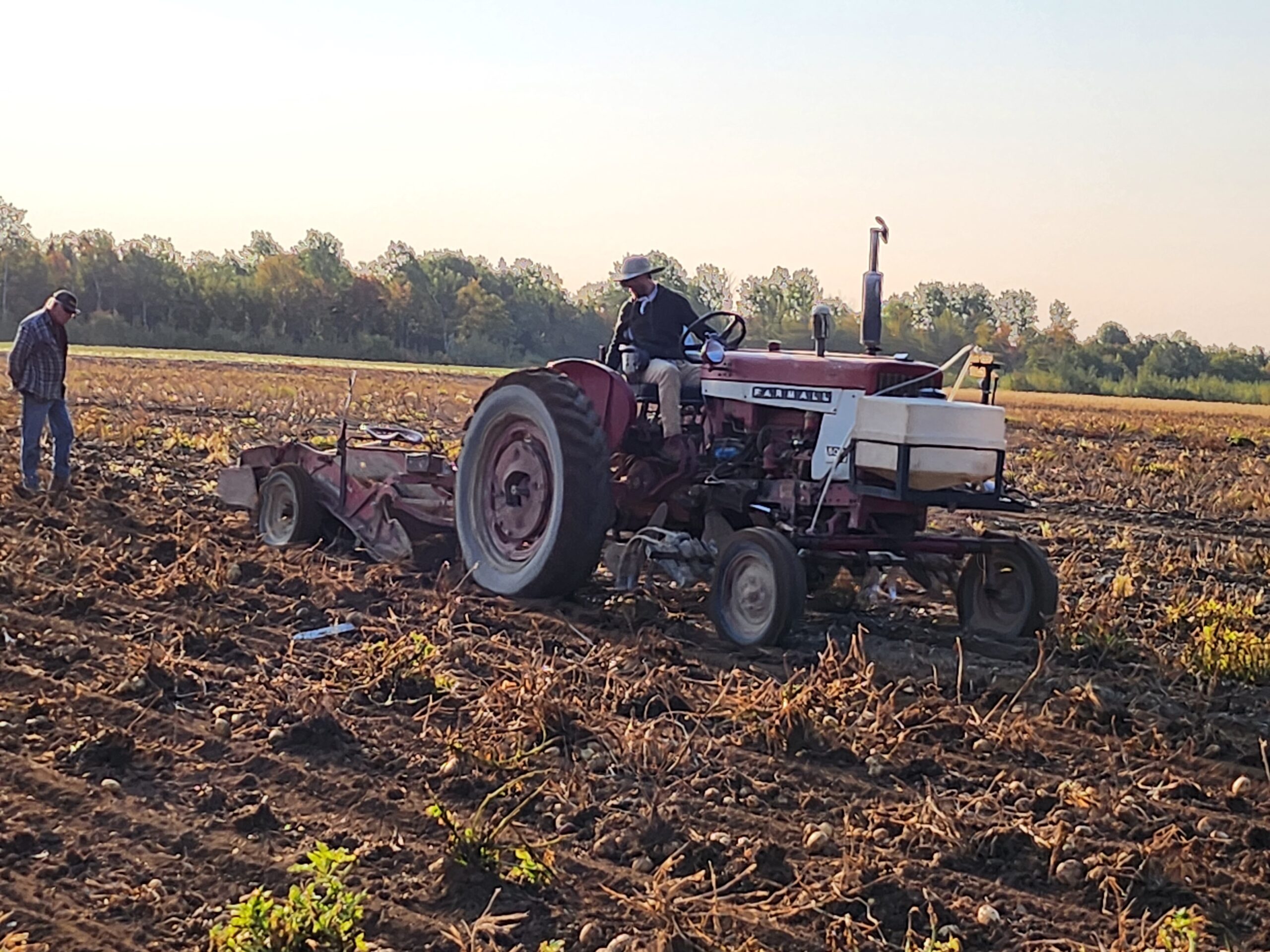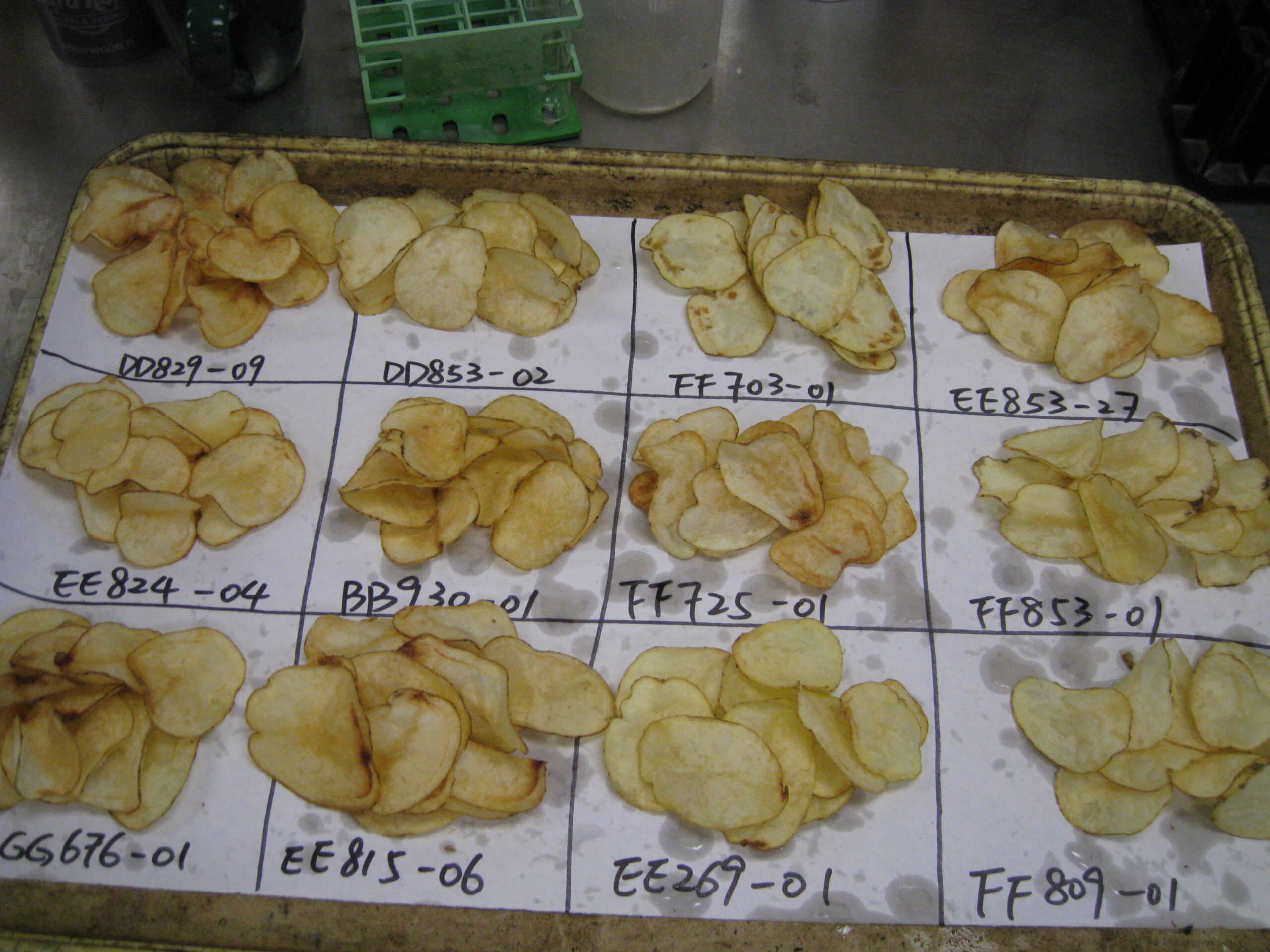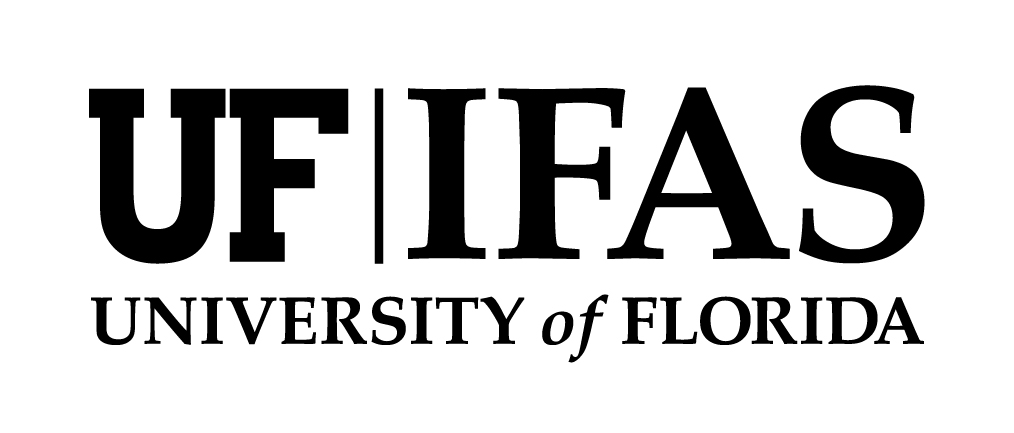Potato (Solanum tuberosum) is the most productive and economically important vegetable on Earth. Throughout history, the humble potato has dutifully served as a nutrient dense subsistence food, essential ingredient for the food processing industry, and shines as a versatile component in gourmet cuisine.
In the United States, commercial potato cultivation occurs in greater than 13 states, generating over 4.5 billion dollars of farm gate value, and delivers greater than 100 billion dollars of economic activity across the potato supply chain. A majority of our potatoes (> 70%) are utilized by the food processing industry (French fries, chips, and other frozen, canned, or dehydrated products), whereas roughly a quarter are destined for sale as a fresh market product (purchased in grocery stores or at restaurants), and a smaller proportion used as seed potatoes (< 5%) or animal feed.
Domesticated potato is an obligate outcrossing tetraploid having four sets of 12 chromosomes and is clonally propagated. The higher ploidy of potato makes genetic improvement through traditional breeding challenging due to; the large variability observed between siblings in breeding families, strict tuber quality specifications required by the processing industry, and the incremental progression from the finite breeder seed of a new variety to the larger certified seed amounts required by industry. Potato also features a large secondary gene pool comprised of greater than one hundred wild relative species, many of which are sexually compatible with domesticated germplasm.
The Agricultural Research Service (ARS) of the U.S. Department of Agriculture (USDA) focuses its potato breeding efforts on improved productivity, storage and processing quality, biotic stress resistance and nutrition at four geographically diverse locations in potato growing regions.
Small Grains and Potato Germplasm Research Unit (Aberdeen, ID)
Located in the largest potato-producing county in the U.S., ARS personnel in the potato breeding and pathology project develop new germplasm and varieties in all market classes, with russets being emphasized. Research emphasizes improved sustainability in potato production by developing and releasing varieties with improved pest and disease resistances, nutrient and water utilization, and enhanced tuber qualities for processing and fresh usage. Widely grown varieties released by the Aberdeen program with partners in the states of Washington, Oregon, and Idaho include Clearwater Russet, Teton Russet, Bannock Russet, Alturas, Umatilla Russet, and Ranger Russet.
Vegetable Crops Research Unit (Madison, WI)
USDA scientists in Madison, Wisconsin work with cultivated and wild potatoes to identify individual clones expressing traits important to the potato industry, such as disease and pest resistance. They also work to incorporate the genes responsible for those traits into germplasm that can be used by potato breeders. The research team conducts basic research on potato responses to pathogens and the environment, as well as genetic and genomic variation between and within species.
Genetic Improvement for Fruits and Vegetables Laboratory (Orono, ME)
The USDA-ARS Potato Variety Development Program for the Eastern U.S. is based in Orono and Presque Isle, Maine. Breeding efforts are focused on developing new potato varieties for the chipper and table markets with an emphasis on agronomics, quality traits, and disease resistance traits. Research also includes a diploid population of Andean potatoes derived from Solanum tuberosum Group; Phureja and Solanum stenotomum. Regional testing is coordinated with university partners in Florida, Michigan, North Carolina, New York, and Wisconsin. The most impactful variety release from this program is Atlantic, a broadly adapted clone with good chipping quality released in 1976.
Temperate Tree Fruit and Vegetable Research Unit (Prosser, WA)
Scientists at the USDA-ARS Potato Germplasm Enhancement Project in Prosser, WA utilize a multidisciplinary approach (genetics, pathology, physiology) to address the economic and sustainability challenges faced by our processing russet and fresh market potato stakeholders in the Pacific Northwest. Breeding efforts are focused around the discovery, genetic mapping, and introgression of disease resistance, nutrition, and processing quality traits which are uncommon in the gene pool of domesticated potato. Regional testing is coordinated with university partners in Idaho, Oregon, and Washington state as part of the Tri-State Potato Breeding Program.







